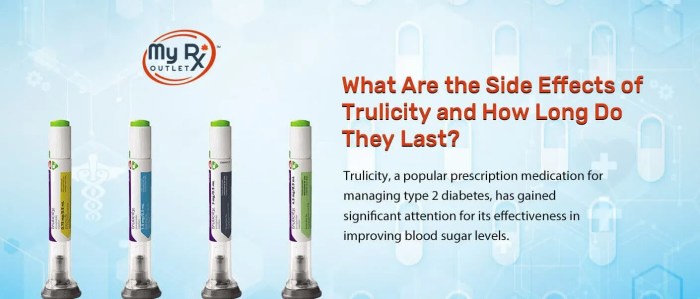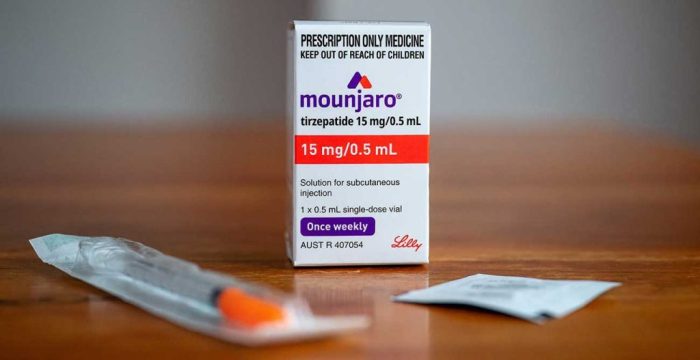Long-Term Side Effects of Trulicity Explained: A Comprehensive Guide
Delve into the realm of Long-Term Side Effects of Trulicity Explained where detailed insights await, offering a nuanced perspective on the impact of this medication. Let's unravel the complexities of its long-term effects and shed light on what lies beneath the surface.
Providing a comprehensive overview of the mechanisms and consequences of prolonged Trulicity usage, this guide aims to equip readers with a deeper understanding of the subject matter.
Introduction to Trulicity and its long-term effects

Trulicity is a prescription medication used to treat type 2 diabetes in adults. It belongs to a class of drugs called GLP-1 receptor agonists, which work by helping the pancreas produce insulin more effectively. While Trulicity can be effective in managing blood sugar levels, there are potential long-term side effects associated with its use.
Common Long-Term Side Effects
- Gastrointestinal Issues: Some individuals may experience nausea, vomiting, diarrhea, or constipation over time while taking Trulicity. These symptoms can vary in severity and may impact daily quality of life.
- Weight Changes: Trulicity can lead to weight loss in some individuals, while others may experience weight gain. Monitoring weight regularly is important to address any significant changes.
- Injection Site Reactions: Long-term use of Trulicity may result in skin reactions, such as redness, itching, or swelling at the injection site. Proper rotation of injection sites can help minimize these effects.
- Hypoglycemia: While less common with Trulicity compared to other diabetes medications, hypoglycemia (low blood sugar) can still occur with long-term use. It is essential to be aware of the signs and symptoms of hypoglycemia and take necessary precautions.
Understanding the mechanism of action of Trulicity

Trulicity, a medication commonly used to manage conditions like diabetes, works in the body by targeting specific biological pathways to regulate blood sugar levels and improve insulin sensitivity.
Biological Pathways Targeted by Trulicity
Trulicity primarily acts on the incretin system in the body, specifically targeting the glucagon-like peptide-1 (GLP-1) receptor. By activating this receptor, Trulicity stimulates the release of insulin from pancreatic beta cells in response to elevated blood glucose levels. Additionally, Trulicity slows down gastric emptying, reducing the rate at which glucose is absorbed in the intestines.
Comparison with Other Similar Medications
Trulicity belongs to the class of medications known as GLP-1 receptor agonists, which also includes drugs like Byetta and Victoza. While these medications share a similar mechanism of action by activating the GLP-1 receptor, Trulicity is known for its once-weekly dosing regimen, providing convenience and improved adherence for patients.
Contribution to Long-Term Side Effects
The mechanism of action of Trulicity, particularly its effects on gastric emptying and insulin release, can contribute to long-term side effects such as gastrointestinal issues (nausea, diarrhea) and hypoglycemia. These side effects may vary in severity among individuals and could impact long-term treatment outcomes for patients using Trulicity.
Common long-term side effects of Trulicity

Trulicity, like any medication, can have some long-term side effects that users should be aware of. These side effects can vary in severity and impact on the quality of life of individuals using Trulicity.
Gastrointestinal Issues
- Nausea and vomiting are common side effects of Trulicity, especially during the initial stages of treatment. Patients may also experience diarrhea and stomach pain.
- These gastrointestinal issues can affect the overall well-being of individuals and may require adjustments in diet or medication to manage effectively.
Weight Changes
- Some individuals may experience weight loss as a side effect of Trulicity, while others may notice weight gain over time.
- Healthcare providers monitor weight changes closely to ensure they are within healthy ranges and make recommendations accordingly.
Hypoglycemia
- Low blood sugar levels, known as hypoglycemia, can occur as a side effect of Trulicity, especially when combined with other diabetes medications.
- Patients need to be aware of the signs and symptoms of hypoglycemia and how to manage it effectively to prevent complications.
Injection Site Reactions
- Some individuals may experience redness, itching, or swelling at the injection site when using Trulicity.
- Healthcare providers can suggest strategies to minimize discomfort and prevent skin irritations at the injection sites.
Factors influencing the occurrence of long-term side effects
When considering the long-term side effects of Trulicity, it is essential to understand the various factors that can influence the likelihood and severity of these effects. Factors such as dosage, duration of use, individual health conditions, and lifestyle choices can all play a role in determining the impact of Trulicity on an individual.
Dosage and Duration of Use
The dosage of Trulicity prescribed by a healthcare provider can significantly impact the occurrence of long-term side effects. Higher doses may increase the likelihood of experiencing adverse effects, while lower doses may be better tolerated. Similarly, the duration of use can also influence the development of side effects.
Prolonged use of Trulicity may lead to a higher risk of experiencing certain side effects compared to short-term use.
Individual Health Conditions
Individual health conditions can interact with Trulicity and affect how the medication is metabolized in the body. Pre-existing health conditions such as kidney disease or gastrointestinal disorders may increase the susceptibility to certain side effects of Trulicity. It is crucial for healthcare providers to consider these individual factors when prescribing Trulicity to minimize the risk of adverse effects.
Lifestyle Factors
Lifestyle choices such as diet, exercise, and overall health habits can also impact the occurrence of long-term side effects with Trulicity. For example, a diet high in carbohydrates or unhealthy fats may exacerbate gastrointestinal side effects, while regular exercise and a balanced diet can help mitigate certain adverse effects.
Being mindful of lifestyle factors and making positive changes can contribute to a better overall experience with Trulicity.
Proactive Measures
Taking proactive measures can help minimize the occurrence of long-term side effects associated with Trulicity. This includes closely following the prescribed dosage and schedule, monitoring any changes in health closely, and communicating any concerns or side effects with a healthcare provider promptly.
Additionally, maintaining a healthy lifestyle through regular exercise, a balanced diet, and adequate hydration can support overall well-being and potentially reduce the impact of side effects.
Last Recap
In conclusion, Long-Term Side Effects of Trulicity Explained navigates the intricacies of this medication, highlighting the importance of awareness and proactive measures in managing potential long-term effects. With this knowledge in hand, individuals can make informed decisions regarding their healthcare journey.
FAQ
What are the most common long-term side effects of Trulicity?
The most common long-term side effects of Trulicity include nausea, diarrhea, and abdominal discomfort.
Are there any severe long-term side effects associated with Trulicity?
While rare, severe long-term side effects of Trulicity may include pancreatitis or allergic reactions. It's important to seek medical attention if any concerning symptoms arise.
How can individuals minimize the occurrence of long-term side effects while taking Trulicity?
Adhering to the prescribed dosage, maintaining a healthy lifestyle, and regularly monitoring blood sugar levels can help reduce the likelihood of experiencing adverse effects.




